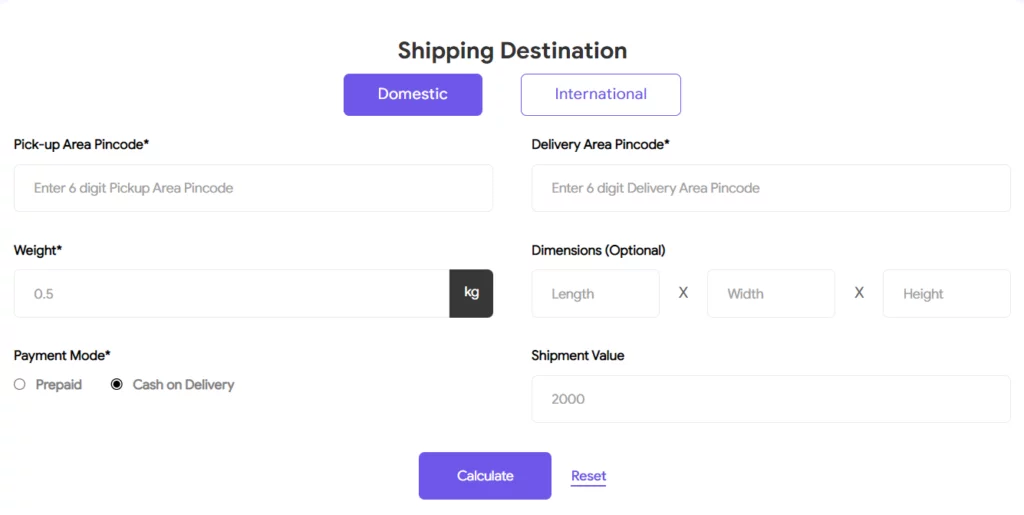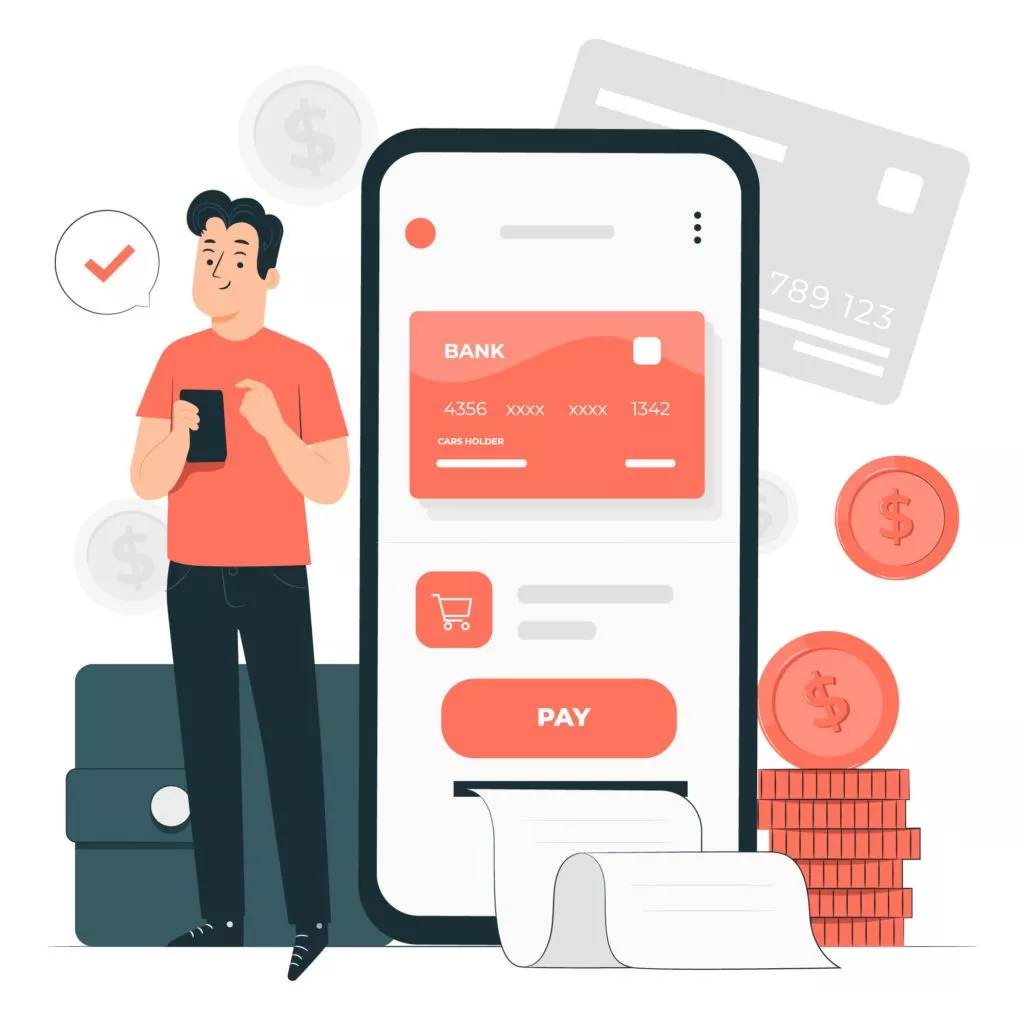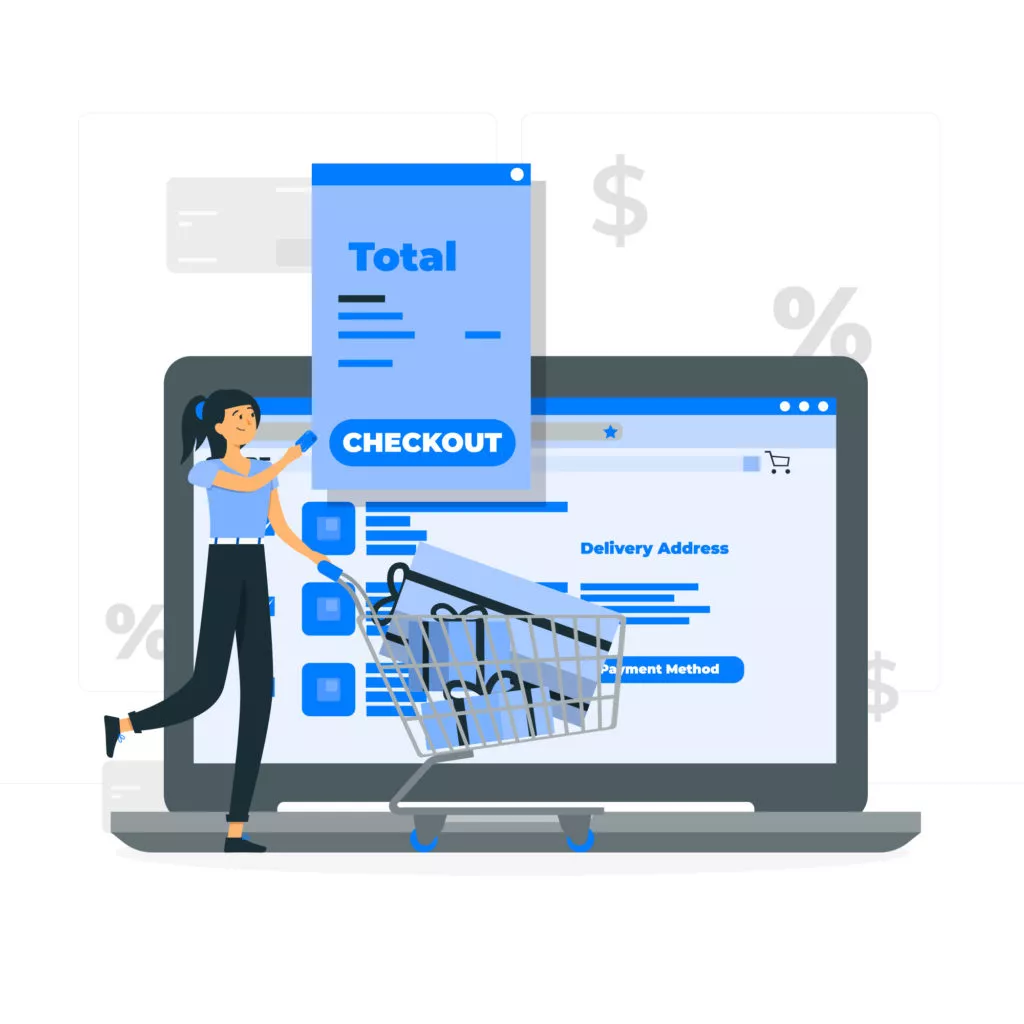The checkout process is one of the most important parts of an ecommerce website. It’s the final step in the customer journey, and it’s where you can make or break a sale. As an online retailer, it is crucial to provide your customers with a seamless and hassle-free checkout experience. A streamlined and optimized checkout process can make a significant difference in reducing cart abandonment rates, increasing conversions, and ultimately boosting your business’s bottom line.
According to a study by the Baymard Institute, an average of 69.57% of ecommerce shopping carts are abandoned. That means that for every 100 shoppers who add items to their cart, only 30 will actually complete the checkout process and make a purchase.
There are a number of reasons why shoppers abandon their carts, but some of the most common include:
- Unexpected costs, such as shipping or taxes
- A complicated or lengthy checkout process
- Lack of trust or security
- Not being able to find the right payment method
By optimizing your checkout process, you can reduce cart abandonment and increase sales. Through this blog, we will explore various strategies and best practices to optimize your checkout process and enhance the overall shopping experience for your customers. Let’s dive in!
Checkout Process Optimization Tips
1. Showcase the final price upfront
One of the most significant reasons shoppers abandon their carts is because they’re surprised by the final price. Make sure to show the total price of the order, including shipping and taxes, before customers reach the checkout page. If they’re surprised by the final price, they’re more likely to abandon their cart.
To showcase the final price upfront, you can add a “total price” field to your shopping cart page. This field should include the total price of the order, including shipping and taxes. You can also add a “shipping calculator” so that shoppers can estimate the shipping costs before they add items to their cart.

2. Allow guest checkout
Not all shoppers wish to create an account before they make a purchase. By offering guest checkout, you make it easier for shoppers to complete their purchases quickly and easily.
To offer a guest checkout, you’ll need to create a guest checkout form that records the shopper’s name, email address, and shipping and payment information. You can also collect optional information, such as the shopper’s phone number or date of birth.
3. Provide multiple payment options
In today’s diverse ecom marketplace, it’s imperative to understand that not all shoppers prefer or have access to the same payment methods. By offering multiple payment alternatives, businesses can accommodate the unique preferences and circumstances of their customers, making it more likely for them to find a payment method that is readily available in an online store.

One of the most commonly used payment methods are credit cards and debit cards. PayPal is an online payment system used globally that permits shoppers to make transactions securely without sharing their financial information with the merchant. It offers a trusted platform for both buyers and sellers, and many people appreciate the ease and security it offers for online purchases.
Google Pay, another digital payment solution, allows buyers to commence with the payment procedure using their smartphones. It securely stores credit and debit card information, allowing for quick and contactless payments in physical stores or online. It also offers added features such as loyalty programs and the ability to store digital tickets and receipts.
4. Offer live chat support
If shoppers have questions during the checkout process, they don’t want to have to abandon their cart and search for customer support. By offering live chat support, you can answer their questions and help them complete their purchase. To offer live chat support, you’ll need to install a live chat plugin that displays in the widget. This window will allow shoppers to chat with a customer service representative in real-time.

5. Use security badges
Shoppers want to feel confident that their personal and financial information is secure. By using security badges from trusted organizations, such as Norton Secured or McAfee Secure, you can help build trust and reassure shoppers that their information is safe. Security badges can be placed in a variety of locations on your checkout page, such as the top of the page, the footer, or next to the payment fields.

6. Create a sense of urgency
Sometimes, all it takes to get a shopper to complete their purchase is a little bit of urgency. You can create a sense of urgency by presenting limited-time discounts or free shipping on orders placed within a certain timeframe.
For example, you could offer a “20% off” discount for orders placed within the next 24 hours. Or, you could offer free shipping on orders over $50 placed before midnight tonight.
7. Offer 1-click checkout
Customers who have previously made purchases from your store might be interested in taking advantage of 1-click checkout’s convenience. They don’t have to enter their shipping and payment information again, making it hassle-free for consumers to seamlessly complete their transactions.
You must create a customer account and safely store the customer’s shipping, taxes, and payment details in order to enable 1-click checkout. The customer can quickly complete the checkout process after logging into their account.

8. Upsell and cross-sell
Once shoppers have added items to their cart, you can upsell and cross-sell them on additional products. This is a great way to increase the average order value and boost your sales.
To upsell and cross-sell, you can display related products on the checkout page or send shoppers targeted email campaigns. Another way is to offer discounts or free shipping on additional products.
Key Strategies for Mobile-Friendly Success
- Mobile-Friendly Checkout Page: With the increasing use of mobile phones for online shopping, it is crucial to ensure that your checkout page is designed and optimized for mobile users. The layout, design, and functionality of the page should be responsive and easily navigable on smaller screens. This allows shoppers to complete their purchases smoothly and conveniently without any difficulties or frustrations arising from an unresponsive or poorly designed mobile checkout page.
- Improved User Experience: A mobile-friendly checkout page enhances the overall user experience for mobile shoppers. By providing a seamless and user-friendly interface, you can considerably lessen the chances of cart abandonment and increase the likelihood of successful conversions. Mobile shoppers should be able to easily enter their shipping and payment details, review their orders, apply any discounts or coupons, and finalize their purchases with minimal effort and frustration.
- Optimization for Touchscreen Devices: Mobile devices primarily use touchscreens, so it is important to optimize your checkout page accordingly. Elements such as buttons, dropdown menus, and form fields should be designed to accommodate touch interactions accurately and efficiently. Ensuring proper spacing between elements and using large, easily tappable buttons can help prevent errors and improve the overall user experience for mobile shoppers.
- Streamlined Checkout Process: The checkout process should be streamlined and simplified, particularly for mobile users who may have limited patience or attention spans. Avoid unnecessary steps or form fields that can prolong the checkout process or cause confusion. Implementing guest checkout options, auto-filling address fields, and providing multiple payment options can further enhance the convenience and efficiency of the mobile checkout process.
- A/B Testing: A one-size-fits-all approach may not work for every ecommerce store, as customer preferences and behaviors can vary. A/B testing permits you to experiment with different checkout processes to identify the most effective one for your specific audience. By creating multiple variations of your checkout page and randomly assigning visitors to different versions, you can gather data on which design, layout, or flow generates higher conversion rates or reduces cart abandonment.
- Tracking Results: Once you have implemented changes to your checkout process, it is essential to track the results and evaluate their impact on key metrics. Analytics tools can help you monitor cart abandonment rates, average order value, conversion rates, and other relevant data. By analyzing these metrics, you can identify any issues or bottlenecks in the checkout process and make data-driven decisions for optimization and improvisation.
- Iterative Improvements: Tracking results and analyzing data should be an ongoing process. Continuously monitor the performance of your checkout page and make iterative improvements based on the insights gained. By regularly testing and refining your checkout process, you can understand changing customer preferences and behaviors, ultimately maximizing conversions and improving the overall customer experience.
Benefits of checkout process optimization
- Reduce cart abandonment: As was already said, by addressing the frequent pain points that cause customers to quit their carts, checkout process optimization can assist you in decreasing cart abandonment.
- Sales growth: You may significantly boost sales by lowering cart abandonment. For instance, you can notice a 25% gain in sales if you can lower your cart abandonment rate by only 5%.
- Increased client satisfaction can be attained by a quick and easy checkout procedure. Repeat business and positive word-of-mouth recommendations may result from this.
- Establish credibility and trust with your customers by providing a safe and reliable checkout process. More revenue and a better reputation for your company may result from this.
- If you’re looking to increase sales and improve your bottom line, checkout process optimization is a critical step. By following the tips above, you can create a checkout process that is simple to use, secure, and trustworthy. This will help you reduce cart abandonment, increase sales, and improve customer satisfaction.
Conclusion
Optimizing the checkout process is an essential aspect of running a successful online business. By implementing the strategies and best practices mentioned above, you can significantly improve the user experience, reduce cart abandonment rates, and boost conversions. Remember to focus on simplicity, transparency, and convenience throughout the entire checkout journey.
Regularly analyze your data, gather customer feedback, and adapt your process accordingly to ensure continuous improvement. By prioritizing checkout process optimization, you’ll create a positive shopping experience that keeps customers coming back for more.
FAQs
What are some common challenges in the checkout process?
Several common challenges can hinder a smooth checkout process. These include complex and lengthy forms, a lack of guest checkout options, hidden fees or unexpected costs, limited payment methods, slow loading times, and a lack of mobile optimization. Addressing these challenges through optimization strategies will help create a frictionless checkout experience for your buyers.
How can I optimize the checkout process for mobile users?
Mobile optimization is crucial as more and more customers are using smartphones to shop online. To optimize the checkout process for mobile users, ensure that your website or app is responsive, loads quickly, and has a simplified and intuitive design. Implement features like autofill, mobile-friendly keyboards, and one-click payment options to minimize typing and make the process faster and more convenient.
What role does trust and security play in the checkout process?
Trust and security are paramount in the checkout process. Customers need to feel confident that their personal and financial information is entered at a safe platform when making a purchase. Display trust signals such as security badges and SSL certificates, clearly communicate your privacy policy and offer secure payment options. Additionally, regularly update and maintain your website’s security features to protect customer data and prevent fraud.
How can I reduce cart abandonment during the checkout process?
Cart abandonment is a common challenge for online retailers. To reduce abandonment rates, simplify the checkout process by minimizing the number of steps and form fields. Provide clear information about the total cost, including taxes and shipping fees, upfront. Offer guest checkout options to avoid forcing customers to create an account. Additionally, consider implementing cart recovery strategies like abandoned cart emails or retargeting ads to remind customers to complete their purchases.



